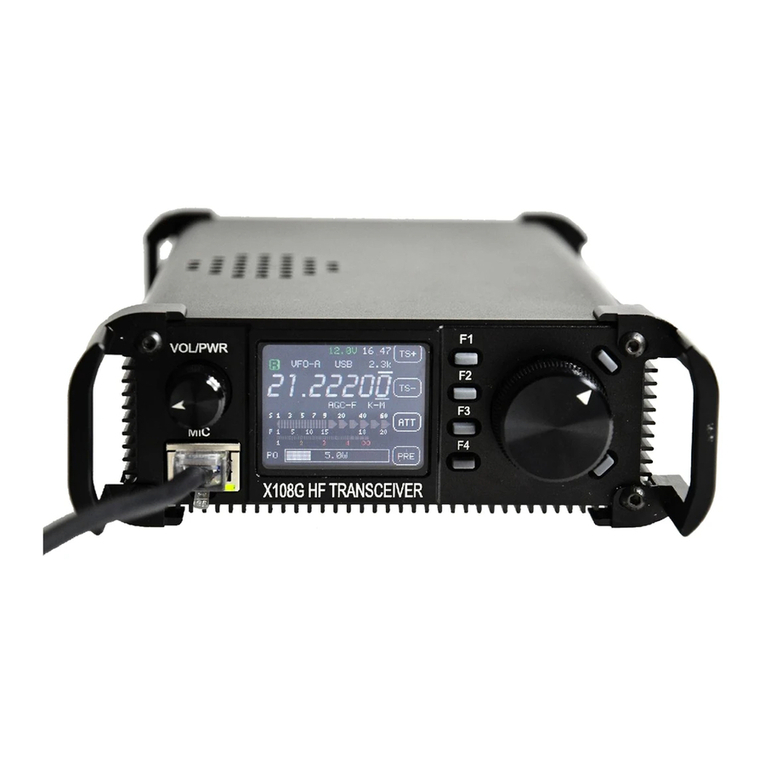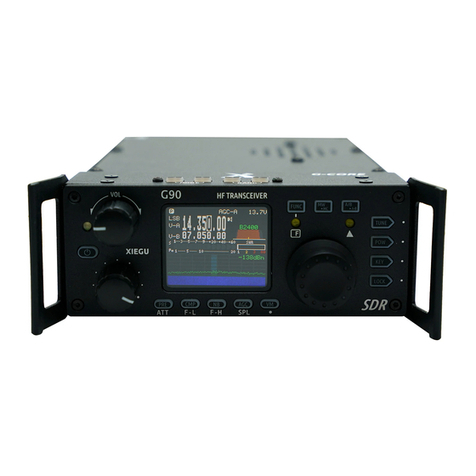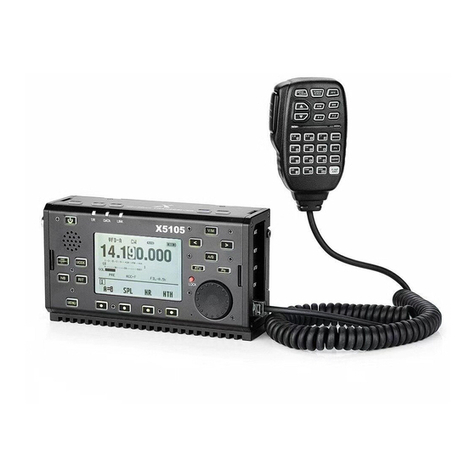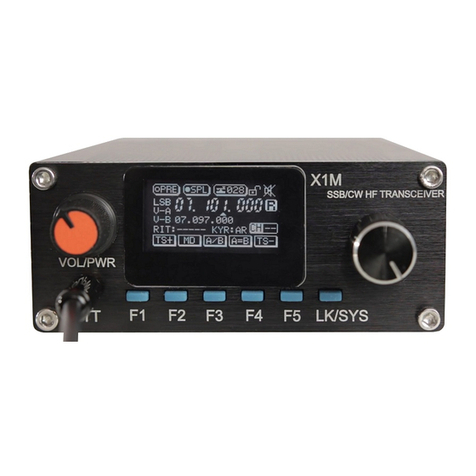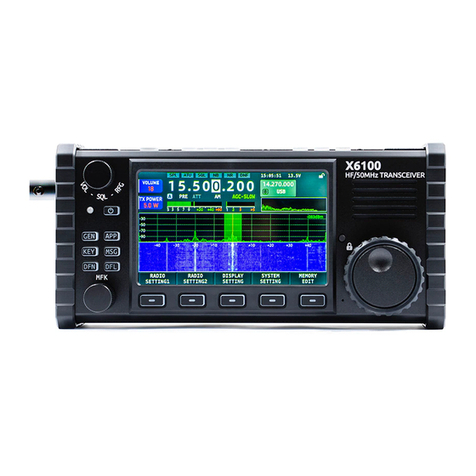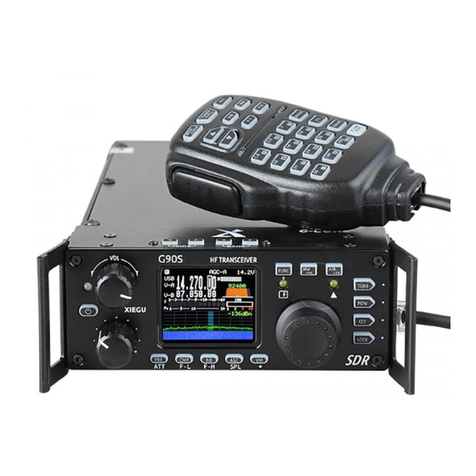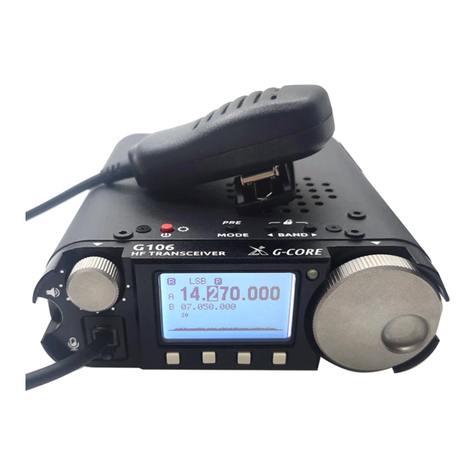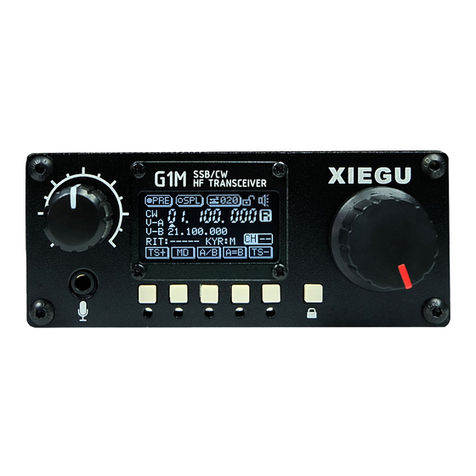
6
INDEX
About Radioddity ............................................................................................... 3
Warnings ............................................................................................................ 4
Copyright ........................................................................................................ 4
Introduction ........................................................................................................ 5
Specifications .................................................................................................... 8
Accessories and optional components ........................................................ 10
Interface Definition .......................................................................................... 11
Machine Interface – Front panel ................................................................... 12
Machine Interface - Rear Panel .................................................................... 13
Machine Interface – Head Unit ..................................................................... 14
Hand Microphone Buttons ............................................................................. 16
Power Source Connection ............................................................................. 17
Functions of the buttons ................................................................................ 18
Operation of a button’s second function: ................................................. 19
Screen Display Icons...................................................................................... 19
Function and definition of displayed icons: ............................................. 20
Operation ......................................................................................................... 21
Transceiver start and shutdown ............................................................... 21
To turn off the LCD screen to save power: ............................................. 21
Display of Power Voltage: ......................................................................... 21
Selection of Working Frequency Range .................................................. 22
Operating Mode Selection ......................................................................... 23
Volume adjustment ..................................................................................... 23
Call Sign Editor............................................................................................ 24
Setting Operational Frequency. ................................................................ 24
Adjustment of RF Gain and Muting Level ............................................... 25
Squelch Operation (prior to firmware v 1.75): ........................................ 26
Multi-function Adjustment Knob (from F/W version 1.75 onwards). .... 26
Reception and Transmission Operations using SPL and VFOA/B ..... 27






